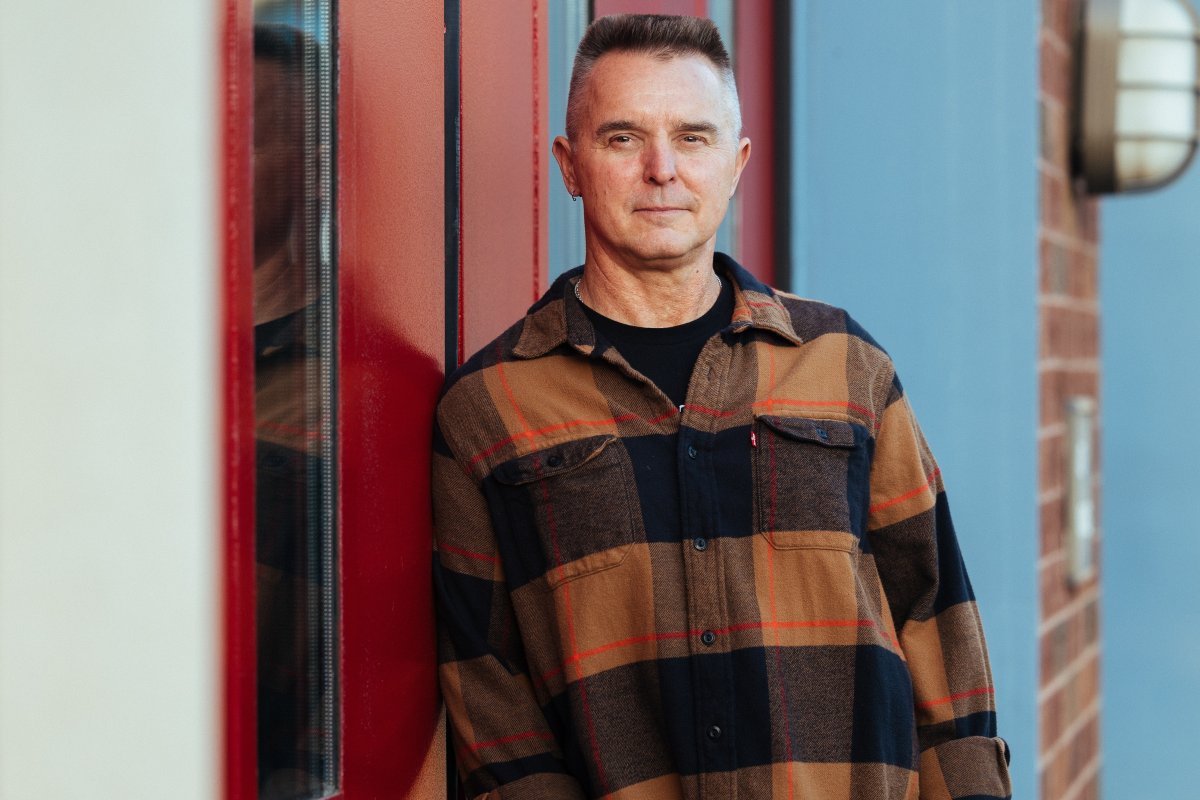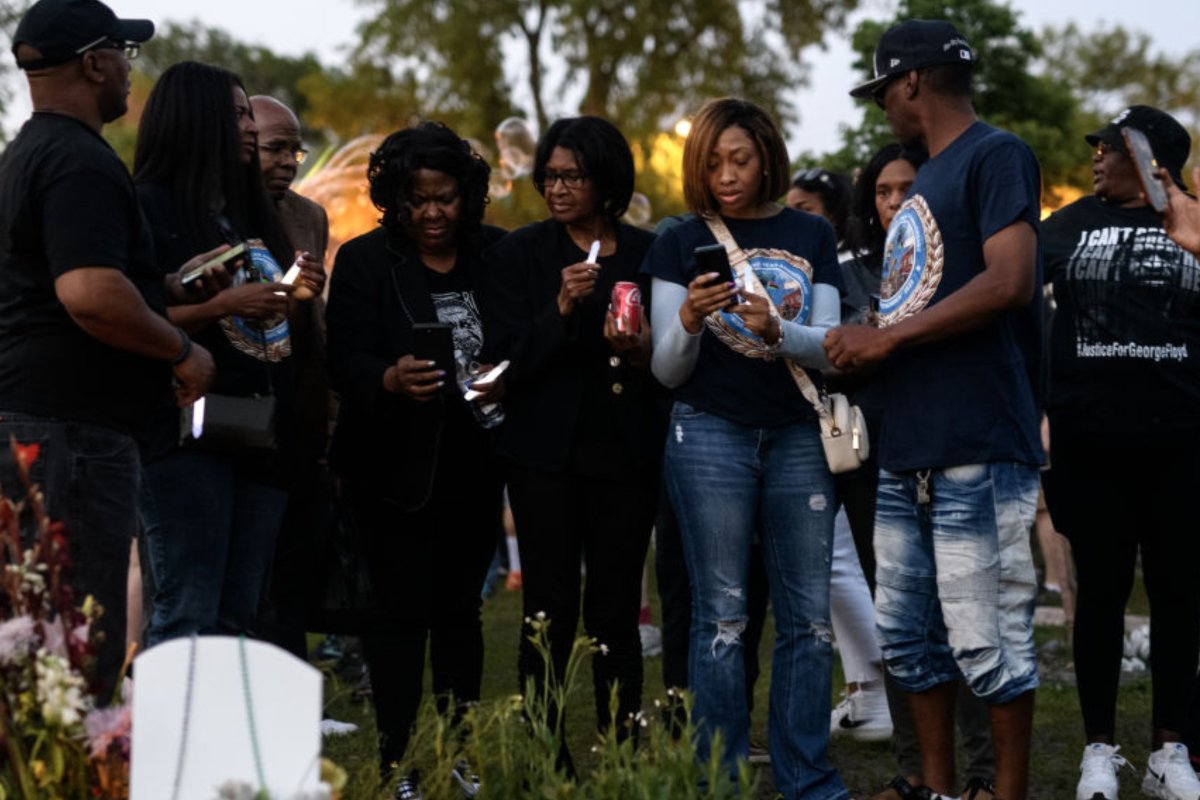I was sitting in my fire station in South Minneapolis one morning this January when I learned of the death of Keenan Anderson after an encounter with the LAPD. My head, my heart, my gut all spasmed with anguish and frustration. This, again?
I was at my desk in March when I learned of the death in custody of Irvo Otieno, in Virginia. Again? Still?
I was sitting in the same chair the night of May 25, 2020, when the Minneapolis Police used overwhelming physical force on a man who stated from the beginning of their interaction that he was anxious, claustrophobic, and hyperventilating.
He was not fighting the police; he was fighting to breathe. That man, George Floyd, died on the street six blocks from my station. My crew and I responded and assisted paramedics in the futile attempt to restore his life. We worked through the subsequent upheaval, the riots, and the tense after-times. We work there still.

I watched my city burn. Saw the anguish caused, and suffered. Saw fractures and fissures in public fabric—good cops castigated and lumped with the bad. Unfair, certainly, but so many citizens have suffered blanket judgments without redress.
The city leaders made promises—most of which have remained abstract, or abandoned. Floyd, his name, and image took on a life after his death, tragically. But: I stress, we still are missing the point.
I testified in the State and Federal trials of the officers involved in killing Floyd. I have seen convictions, payouts, and reams of social media postings and think pieces, and declarations from civil leaders.
And yet, I must ask, structurally, systemically, and institutionally: What changes have been made to prevent more avoidable deaths?
I argue we have yet to recognize or understand the fatal dynamics that caused the deaths of George Floyd, Keenan Anderson, Ivo Otieno, Elijah McLean, Yia Xiong, Travis Jordan, and David Smith.
The names spill off my page: I cannot tabulate the dead in the space allotted here.
We must distinguish between the truly rare aggressive and hostile person and the too-common civilian experiencing some form of altered mentation. Someone who is incoherent, who is experiencing emotional or mental distress for any reason, this person's behaviors must be recognized and treated as something other than "resisting" and "refusing to comply."
Someone in crisis and someone aggressively hostile are not the same. It is that simple.
Anderson had caused a minor traffic accident and appeared incoherent and agitated when the police officer engaged him. The officer escalated from speaking to shouting to physical restraint to fighting against a man who was clearly in distress.
More officers joined the fray. They shouted multiple commands, some contradictory; they piled on him on the ground, then deployed their Tasers—multiple times. The young man was not resisting or fighting them; he was having a crisis. His death was unnecessary and avoidable.
Otieno was experiencing a mental health crisis. His family called 911 for help. The responding officers escalated a physical struggle with the agitated, panicked young man. This began a multiple-hour process of prone restraint, physical abuse, positional asphyxia, and medical neglect. His death was unnecessary and avoidable.
In my 23 years as a Minneapolis firefighter and EMT, I have been on multiple scenes with agitated civilians experiencing altered mental conditions, many people incoherent and unreachable through words and force.
George Floyd was not my first fatal call. We worked hard yet in futility to revive someone killed by overly aggressive officers. Every one of us at the scene carries the tragic horror with us.
I have seen far too many interactions go south explicitly due to the responders' blind demand for immediate submission and acquiescence—generally the police, but at times EMS, too.

Here's the crucial point, what should be at the forefront of police and EMS training as well as state and city legal discussions: The majority of these calls go badly because emergency responders are not trained, equipped, or disposed to understand what they are actually encountering.
Police, Fire, and paramedics must recognize that a person experiencing altered mentation is not the same as a person refusing to follow orders. Treating emotional and behavioral crises as deliberate aggression fails the public and the fundamental concept of emergency response.
How many civilians experiencing a mental health crisis—overwhelmingly men of color—must die at the hands, knees, and weapons of peace officers?
An investigation—of a minor vehicle collision, a bogus twenty-dollar bill, a man walking down the street—spirals out of control. Not because the subject means to harm the police officer, but because the police officer demands compliance, and if the person does not, or cannot, immediately comply, that is seen as a challenge and a threat.
If we do not change our tactical approach when encountering someone not in their right mind, we will continue to kill innocent people.
The job can be dangerous: You never know what you will encounter. But that is the essence of emergency response. It is unpredictable and often chaotic.
Responders are given scant information via dispatch; we must make swift inferences immediately upon arrival. Daily, the police, paramedics, and firefighters encounter civilians in conditions or crises of altered mentation. We should expect these folks. We must be prepared for a range of people who are not going to respond coherently.
What if the person does not speak English? Has a brain injury? Is hypoxic or hypoglycemic? In shock? Is under the influence of narcotics? What if it's my father with Alzheimer's? What if it's someone having a mental health emergency, a psychotic break?
I have responded to people with each of these conditions and none of them were lucid or immediately compliant. None of them were deliberately a threat, either.
There are numerous videos of police encountering civilians in emotional distress, mental crisis, and incoherence, with the officers escalating a physical battle. Yelling orders at someone who is incoherent is a flawed, futile approach. Using joint locks, pressure point attacks, chokeholds, and bodyweight—all the forms of overwhelming physical engagement—do not calm or control a person in crisis or altered mentation. The pain inflicted by the officers will not 'bring them to their senses' but will provoke panic and a fight-or-flight response.
When someone is pinned on the ground by several people, there can be panicked agitation, hyperventilation, and positional asphyxia.
We are directly causing a growing cardiac and respiratory crisis, one that would not be occurring had we not physically restrained the person.
For years, the city leadership repeated the police narrative: The man refused to comply. Officers attempted to subdue him. He resisted. He suffered a medical event. There was nothing else we could have done.
What strikes me is that so many killings have occurred without any significant accountability, no rules or laws changed, no legal interventions, no oversight of department policies or training.
Allowing the behaviors to persist, despite the number of dead and the settlements after the fact, is a moral failure by local, state, and national leaders.
These deaths have been accepted as the cost of policing. With increased public pressure, and abundant video evidence, more cities are prosecuting the officers involved.
This might be a step toward justice for the families of the dead, but it avoids addressing what is at the root: Poor understanding, poor training, poor guidelines, and a healthcare crisis that leaves so many people struggling with mental health, substance abuse, medication shortages.
We, the emergency responders, are the ones who engage those in crises. The cities won't do what is necessary to equip their responders with the real tools to better recognize, assess, and engage the vast range of civilians.
I am not naïve. I have been on tumultuous, violent calls. I have seen aggressive, agitated, and unstable people. There was no calming or cajoling them. The longer it took us to recognize the person was beyond reaching, the more the scene deteriorated. These are scary situations. On the streets, away from the emergency departments, we need a means to safely subdue a person in crisis.
Sedation works. But sedation should not be dispensed wantonly. We must recognize that if we sedate someone after several minutes of agitated struggle and physical engagement, they might already be heading into respiratory or cardiac collapse.
If emergency responders cannot distinguish between someone who is a deliberate threat versus someone who is in crisis, and if we act as if there is only the former—we will continue to murder innocent people.
If city governments can only exonerate their officers, no matter their misdeeds, or else vilify the individual officers as rogues and lone wolves—avoiding the crucial roles that systemic and cultural behaviors play—they will continue to fail their citizens and their employees.
The final line of Langston Hughes' powerful poem "Harlem" (commonly referred to as "A Dream Deferred") is: "Or does it explode?"
Why must it take a riot to get our attention? What will it take to make actual changes?
Jeremy Norton is a fire captain for the Minneapolis Fire Department and the author of Trauma Sponges: Dispatches from the Scarred Heart of Emergency Response.
All views expressed in this article are the author's own.
Do you have a unique experience or personal story to share? Email the My Turn team at myturn@newsweek.com
Correction 08/01/23, 11:18 a.m. ET: A photo caption was corrected to say Jeremy Norton has been a fire captain since 2007.
Uncommon Knowledge
Newsweek is committed to challenging conventional wisdom and finding connections in the search for common ground.
Newsweek is committed to challenging conventional wisdom and finding connections in the search for common ground.
About the writer
Jeremy Norton is a fire captain for the Minneapolis Fire Department and the author of Trauma Sponges: Dispatches from the ... Read more
To read how Newsweek uses AI as a newsroom tool, Click here.








